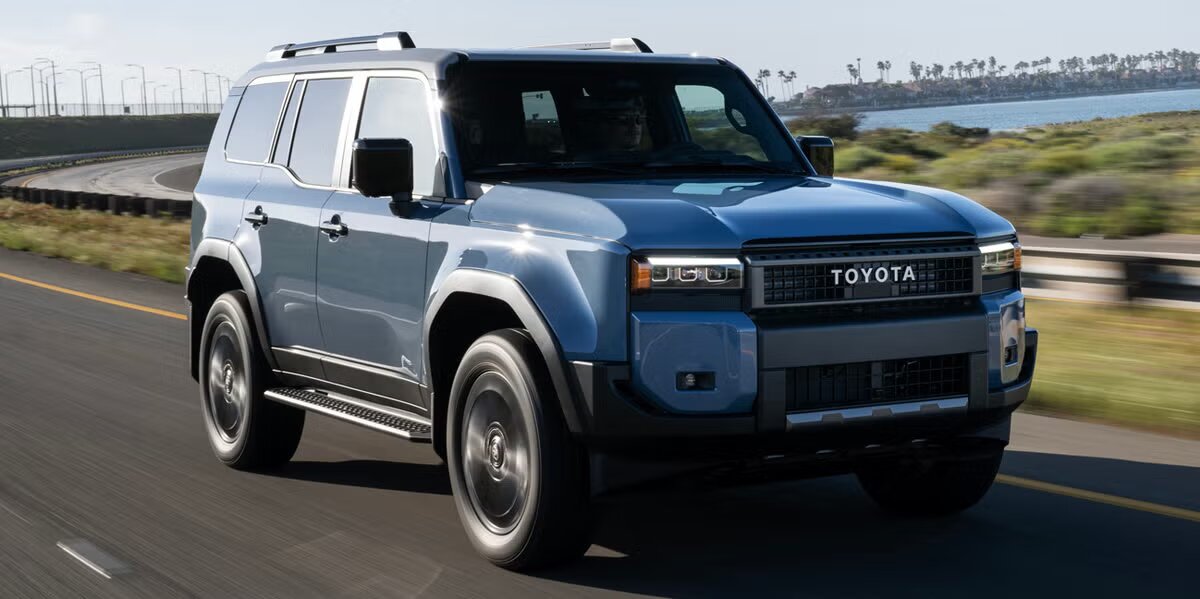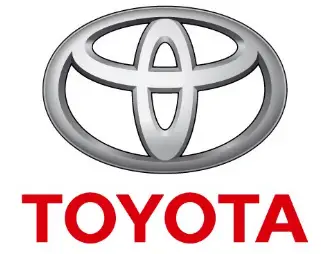2025 Toyota Landcruiser Maintenance Schedule User Guide
The 2025 Toyota Land Cruiser maintenance plan will be covered in this book to guarantee lifespan, safety, and peak performance. Learn about suggested inspections, critical service intervals, and professional advice to maintain the best possible condition for your Land Cruiser.
2024 Toyota Land Cruiser Review, Specs, Price and Mileage (Brochure)
Toyota Maintenance requirements Guide
To ensure safe and econom-ical driving, day-to-day care and regular maintenance are essential. It is the owner’s responsibility to perform regular checks. Toyota recommends the fol-lowing maintenance:
Repair and replacement
It is recommended that genuine Toyota parts be used for repairs to ensure performance of each sys-tem. If non-Toyota parts are used in replacement or if a repair shop other than a Toyota dealer performs repairs, confirm the warranty cover-age.
Allow inspection and repairs to be performed by a Toyota dealer
- Toyota technicians are well-trained specialists and are kept up to date with the latest service information. They are well informed about the operation of all systems on your vehicle.
- Keep a copy of the repair order. It proves that the maintenance that has been performed is under war-ranty coverage. If any problem should arise while your vehicle is under warranty, your Toyota dealer will promptly take care of it.
WARNING
If your vehicle is not properly maintained
Improper maintenance could result in serious damage to the vehicle and possible serious injury or death.
Handling of the battery
- Engine exhaust, some of its constituents, and a wide variety of automobile components con-tain or emit chemicals known to the State of California to cause cancer and birth defects and other reproductive harm. Work in a well ventilated area.
- Oils, fuels and fluids contained in vehicles as well as waste pro-duced by component wear con-tain or emit chemicals known to the State of California to cause cancer and birth defects or other reproductive harm. Avoid exposure and wash any affected area immediately.
- 12-volt battery posts, terminals and related accessories con-tain lead and lead compounds which are known to cause brain damage. Wash your hands after handling. (P.548)
General maintenance
General maintenance should be performed on a daily basis. This can be done by yourself or by a Toyota dealer.
Scheduled maintenance
Scheduled maintenance should be performed at specified inter-vals according to the mainte-nance schedule. For details about maintenance items and schedules, refer to the “Scheduled Maintenance Guide” or “Owner’s Manual Supplement”.
Resetting the message indicat-ing maintenance is required
After the required maintenance is performed according to the mainte-nance schedule, please reset the message. To reset the message, follow the procedures described below:
- Select in screen of the multi-information display, and then press and hold ok
- Select “Scheduled Maintenance” and then press and hold ok
- Select “Yes” and then press
A message will be displayed on the multi-information display when the reset procedure has been com-pleted.
Do-it-yourself mainte-nance
You can perform some mainte-nance procedures by yourself. Please be aware that do-it-your-self maintenance may affect warranty coverage. The use of Toyota repair manuals is recommended. For details about warranty cover-age, refer to the separate “Owner’s Warranty Information Booklet” or “Owner’s Manual Supplement”.
General maintenance
Listed below are the general maintenance items that should be performed at the intervals specified in the “Owner’s Warranty Informa-tion Booklet” or “Owner’s Manual Supplement/Sched-uled Maintenance Guide”. It is recommended that any problem you notice should be brought to the attention of your Toyota dealer or qualified service shop for advice.
WARNING
If the engine is running
Turn the engine off and ensure that there is adequate ventilation before performing maintenance checks.
Engine compartment
| Items | Check points |
| Brake fluid | Is the brake fluid at the correct level? |
| Engine/power control unit coolant | Is the engine/power control unit coolant at the correct level? |
| Engine oil | Is the engine oil at the correct level? |
| Exhaust sys- tem | There should not be any fumes or strange sounds. |
| Engine radia- tor/con- denser/interc ooler radiator | The engine radia- tor, condenser and intercooler radiator should be free from foreign objects. |
| Washer fluid | Is there sufficient washer fluid? |
Luggage compartment
| Items | Check points |
| 12-volt bat- tery | Check the connec- tions. |
Vehicle interior
| Items | Check points |
| Accelerator pedal |
|
| Automatic transmission “Park” mech- anism |
|
| Brake pedal |
|
| Brakes |
|
| Head restraints |
|
| Indica- tors/buzzers |
|
| Lights |
|
| Parking brake |
|
| Seat belts |
|
| Seats |
|
| Steering wheel |
|
Vehicle exterior
| Items | Check points |
| Doors |
|
|
Engine hood |
|
| Fluid leaks |
|
| Tires |
|
| Windshield wipers/rear window wiper |
|
Emission inspection and maintenance (I/M) programs
Some states have vehicle emission inspection pro-grams which include OBD (On Board Diagnostics) checks. The OBD system monitors the operation of the emission control sys-tem.
If the malfunction indica-tor lamp comes on
The OBD system determines that a problem exists some-where in the emission control system. Your vehicle may not pass the I/M test and may need to be repaired. Contact your Toyota dealer to service the vehicle.
Your vehicle may not pass the I/M test in the fol-lowing situations:
- When the 12-volt battery is disconnected or discharged Readiness codes that are set during ordinary driving are erased.
Also, depending on your driv-ing habits, the readiness codes may not be completely set. - When the fuel tank cap is loose The malfunction indicator lamp comes on indicating a temporary malfunction and your vehicle may not pass the I/M test.
When the malfunction indicator lamp still remains on after several driving trips
The error code in the OBD sys-tem will not be cleared unless the vehicle is driven 40 or more times.
If your vehicle does not pass the I/M test
Contact your Toyota dealer to prepare the vehicle for re-test-ing.
Do-it-yourself service precautions
If you perform maintenance by yourself, be sure to fol-low the correct procedure as given in these sections.
2024 Toyota Land Cruiser Review, Specs, Price and Mileage (Brochure)
Maintenance
| Items | Parts and tools |
| 12-volt bat- tery condition |
|
| Brake fluid level |
|
| Headlight aim |
|
| Engine radia- tor, con- denser and intercooler radiator | – |
| Tire inflation pressure |
|
|
Washer fluid |
|
| Engine/power control unit coolant level | “Toyota Super Long Life Coolant” or a similar high quality ethylene glycol-based non-silicate, nonamine, non-nitrite and non-borate coolant with longlife hybrid organic acid technology For the U.S.A.: “Toyota Super Long Life Coolant” is premixed with 50% coolant and 50% deionized water. For Canada: “Toyota Super Long Life Coolant” is premixed with 55% coolant and 45% deionized water.
|
| Engine oil level | “Toyota Genuine Motor Oil” or equivalent
|
| Fuses | Fuse with same amperage rating as original |
| Hybrid battery (traction battery) air intake vent | Vacuum cleaner, etc, |
WARNING
The engine compartment contains many mechanisms and fluids that may move suddenly, become hot, or become electrically energized. To avoid death or serious injury, observe the following precautions.
When working on the engine compartment
- Make sure that “POWER ON” on the multi-information display and the “READY” indicator are both off.
- Keep hands, clothing and tools away from the moving fan and engine drive belt.
- Be careful not to touch the engine, power control unit, radi-ator, exhaust manifold, etc. right after driving as they may be hot. Oil and other fluids may also be hot.
- Do not leave anything that may burn easily, such as paper and rags, in the engine compart-ment.
- Do not smoke, cause sparks or expose an open flame to fuel. Fuel fumes are flammable.
- Take care because brake fluid can harm your hands or eyes and damage painted surfaces. If fluid gets on your hands or in your eyes, flush the affected area with clean water immedi-ately. If you still experience dis-comfort, consult a doctor.
When working near the cool-ing fan or radiator grille
Be sure the power switch is off. With the power switch in ON, the cooling fan may automatically start to run if the air conditioning is on and/or the coolant temperature is high. (P.542)
When working on or under the vehicle
Do not get under the vehicle with just the jack supporting it. Always use automotive jack stands or other solid supports.
Safety glasses
Wear safety glasses to prevent flying or falling material, fluid spray, etc., from getting in your eyes.
NOTICE
If you remove the air cleaner filter
Driving with the air cleaner filter removed may cause excessive engine wear due to dirt in the air.
NOTICE
If the fluid level is low or high
It is normal for the brake fluid level to go down slightly as the brake pads wear or when the fluid level in the accumulator is high.
If the reservoir needs frequent refilling, it may indicate a serious problem.
Useful Links:
2024 Toyota Land Cruiser Review, Specs, Price and Mileage (Brochure)
2025 Toyota Landcruiser Warning Lights and Indicator User Guide


